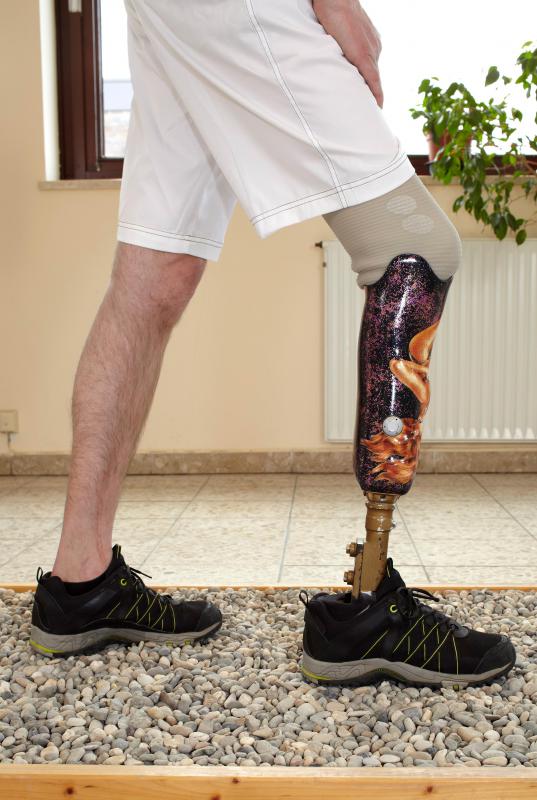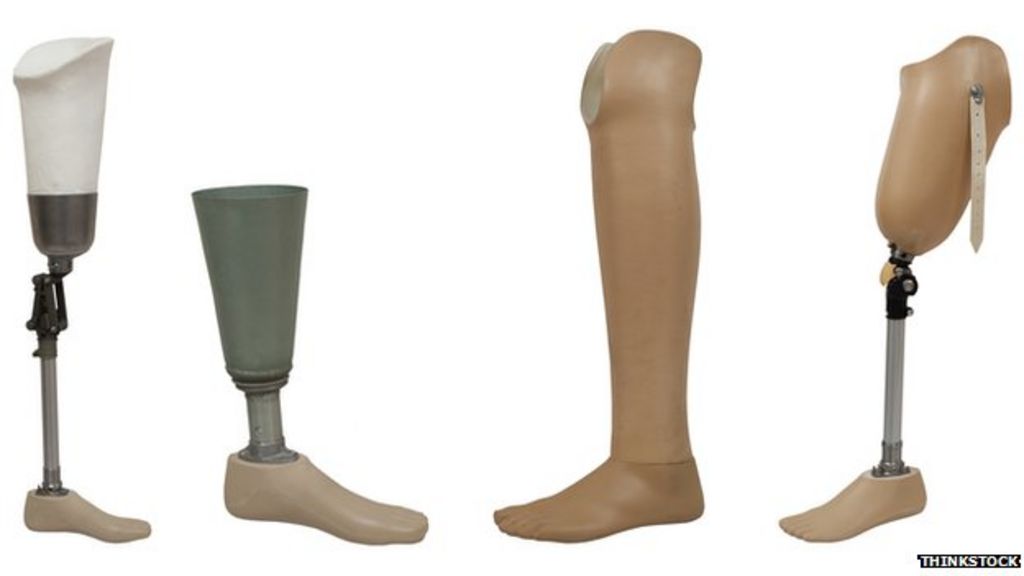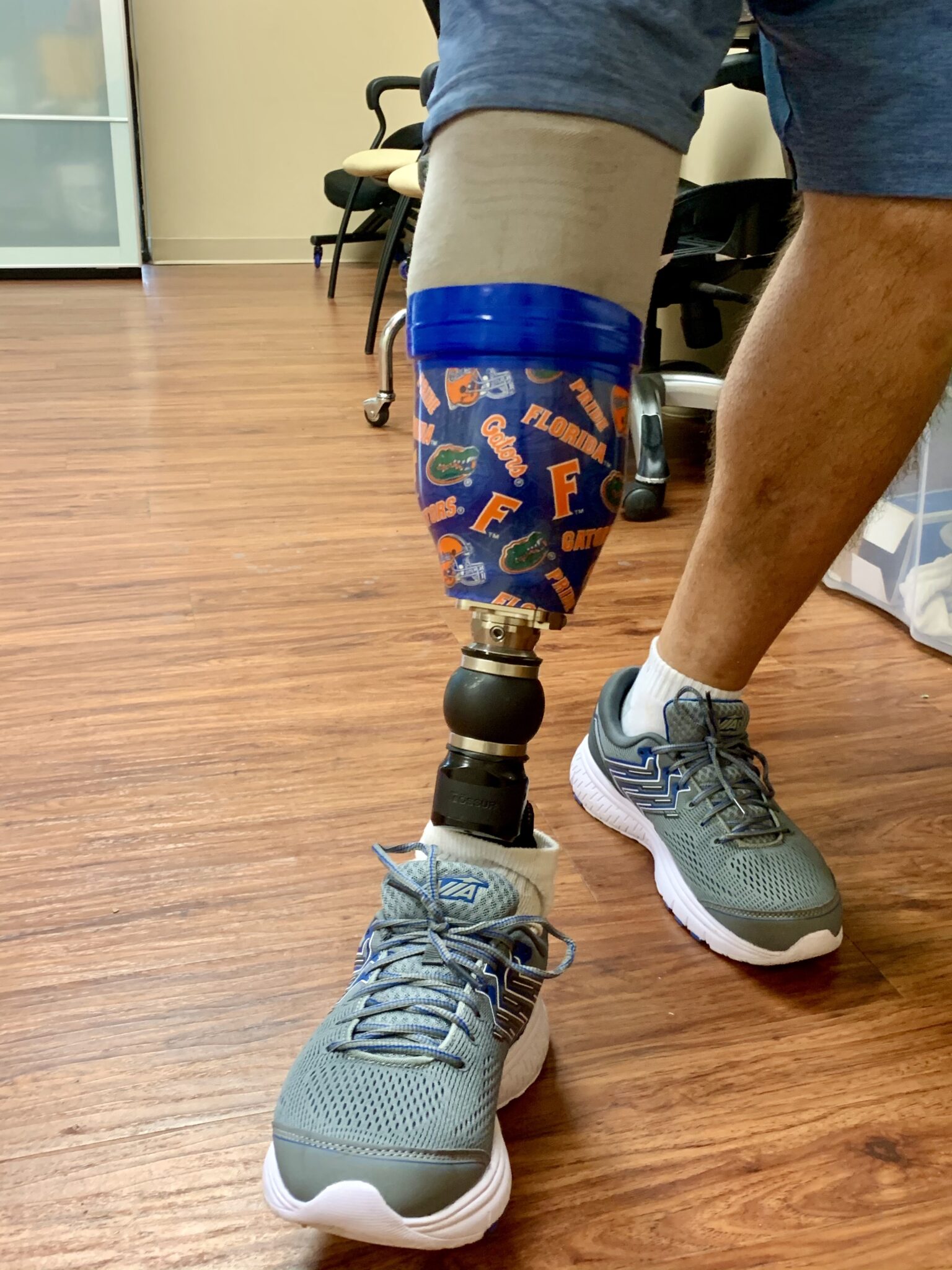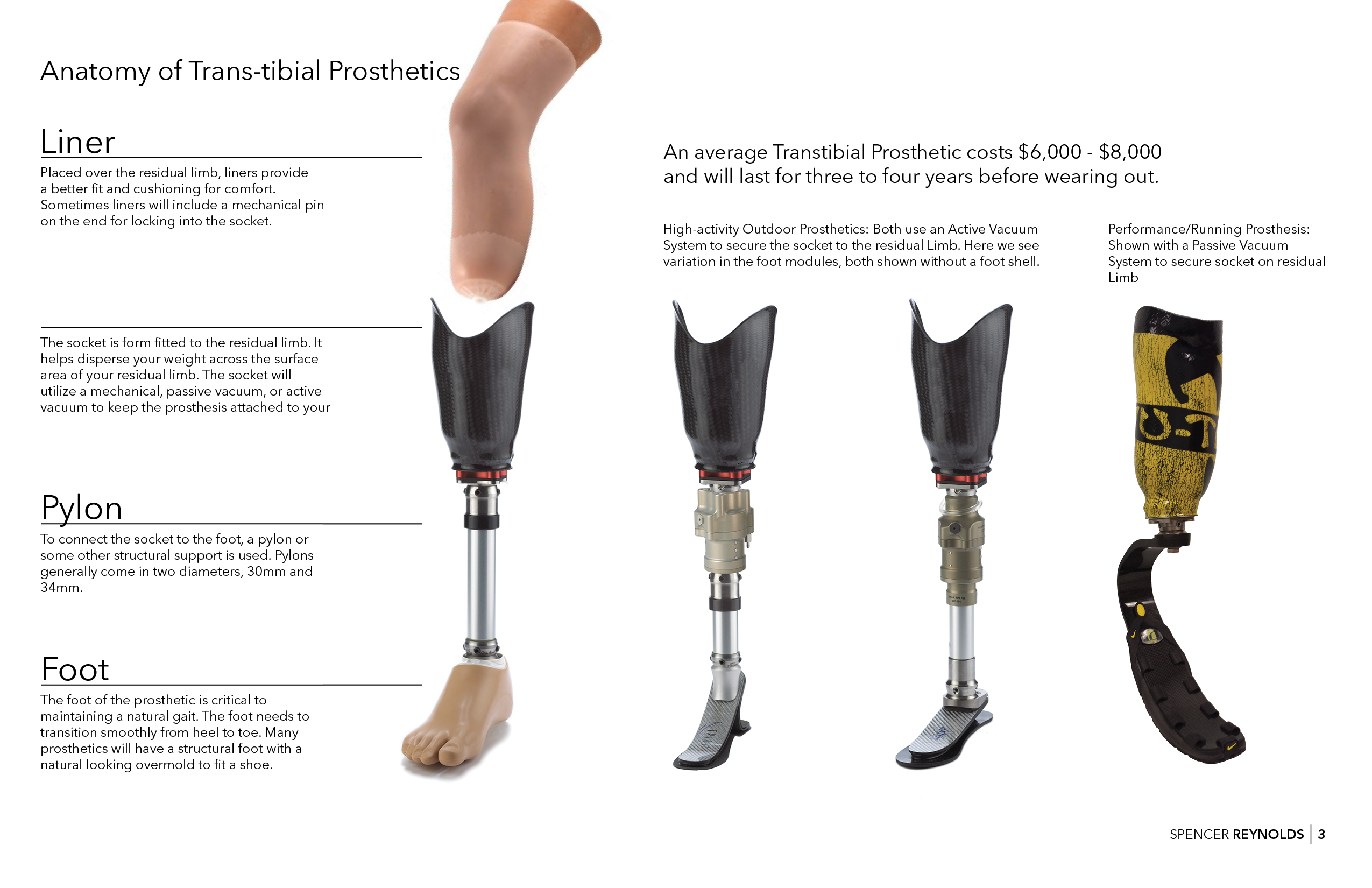
Prosthetic Leg 3D model CGTrader
This type of contraction, coupled with an appropriate linkage system, allows the muscles to provide our device with a full range of motion in both the knee and ankle joints with approximately 250.

above knee prosthetic leg 3D model animated CGTrader
However, most prosthetics can fit into one of the four main categories: transradial, transhumeral, transtibial, and transfemoral, but prosthetic legs, in particular, will be transtibial or transfemoral (the other two are regarding arm prosthetics). Transtibial Prosthetic Legs Transtibial prosthetic legs include any prosthetic legs below the knee.

Lower Limb Prosthetics PM&R KnowledgeNow
271 Different prosthetic devices are used in different situations and it's important to understand the differences among them to make the right choice. There are 4 main types of prosthetics: Transradial — Artificial arms attached below the elbow. Transfemoral —Artificial legs attached above the knee or around the thigh.

Prosthetic Leg Below Knee Best Prices Al Fadl Medical
Prosthetic legs, or prostheses, can help people with leg amputations get around more easily. They mimic the function and, sometimes, even the appearance of a real leg. Some people still need a cane, walker or crutches to walk with a prosthetic leg, while others can walk freely.

What are Prosthetic Devices? (with pictures)
There are three types of prosthetic elbows: simple locking elbows can be pre-positioned, then locked during an activity cable-controlled elbows are controlled by shoulder muscles and may be locked in place electronic elbows are controlled by myoelectric signals from muscles in the limb

How innovation has perfected the prosthetic leg for the last 200+ years. Prosthetic leg
There are two main types of prosthetic legs: mechanical prostheses and microprocessor-controlled devices. Mechanical prostheses provide all the core capabilities users need to walk safely and securely. Advanced microprocessor-controlled technologies are even more powerful, including many that can mimic natural walking movements.

What everyone should Know About Prosthetic Legs Premier Prosthetic
A prosthetic leg is a device used to support users who are missing all or part of their limb due to an injury, accident, illness, or congenital condition. Prosthetic legs can empower people with limb differences in many different ways.

Lesserknown things about prosthetic legs BBC News
A prosthetic leg is a device used to support users who are missing all or part of their lower limbs (hip, knee, foot, or toes) due to an injury, accident, illness, or congenital condition. Prosthetic legs can empower people with limb differences in many different ways. They can help users regain their mobility and independence, pursue their.

Lower Limb Prosthetics PM&R KnowledgeNow
2 Types of Prosthetic Legs 3 Materials Used in Prosthetic Legs 4 Design and Functionality of Prosthetic Legs 4.1 Components of Prosthetic Leg 4.2 Fitting and maintenance of prosthetic legs 4.3 Rehabilitation and physical therapy 4.4 Physical Activity for Patients with Prosthetic Leg 4.5 The cost of prosthetic legs 5 Advancements in Prosthetic Legs

Below Knee Prosthesis Ronald Westcoast Brace and Limb Testimonial
10 Types of Prosthetic Legs 10.1 Below-Knee Prosthetic Legs 10.2 Above-Knee Prosthetic Legs 10.3 Syme's Prosthetic Legs 10.4 Hip Disarticulation Prosthetic Legs 10.5 Hemipelvectomy Prosthetic Legs 11 Advancements and Future Developments 12 Conclusion 13 Components of Prosthesis Legs - Frequently Asked Questions (FAQ)

Personalized Prosthetic ModKit Spencer Reynolds
A prosthesis (plural: prostheses) is an artificial device that replaces a body part lost through trauma, disease or a congenital condition. The components of a prosthesis depend on the body part it replaces. If the prosthesis replaces a leg, for example, you can call it a prosthetic leg. Socket The socket connects your residual limb to your.

Lower Extremity Prosthetics Medcuro Prosthetics
There are different types of prosthesis designed to function — and sometimes look like natural arms, legs, hands, and feet. Today's Prosthesis options are lightweight, more comfortable, and technologically advanced, offering a wide range of motion.
Key parts of belowand aboveknee prostheses. Download Scientific Diagram
A prosthetic leg, or prosthesis, is a mechanical accessory that serves as a substitute for an organ that is missing in a person and partially or fully fulfills the role of the organ.

Artifical leg Prosthetic leg, Orthotics and prosthetics, Leg prosthesis
When talking about prosthetics and artificial limbs, it's important to note the differences between the various types and their specific uses.

Lower Limb Prosthetics PM&R KnowledgeNow
Prosthetics are an essential tool that can help physically challenged individuals gain mobility and independence. This guide has provided an overview of different types of prosthetics, including hand, arm, shoulder, foot, leg, hip, ear, nose, and eye prosthetics. Additionally, the guide has also highlighted advanced prosthetics options such as.

Artificial Leg Fitting Orthotics and prosthetics, Below the knee amputation, Legs
We'll run through the basic components of a suction-based, below-knee, prosthetic leg and how they work. This should lay the foundation to dive deeper into e.